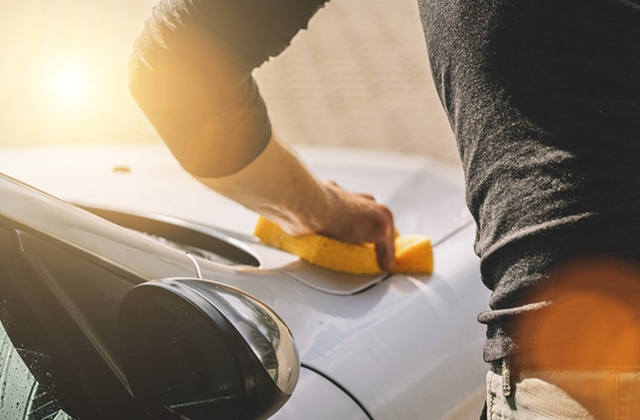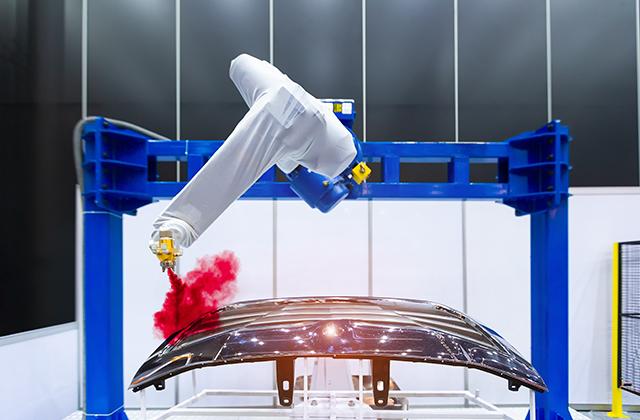When it comes to ceramic car protection Adelaide has got you covered. Most car dealers will offer add ons alongside the purchase of your car as a way of sweetening the deal, or simply as an up sell to increase their margins, both of which may have their own pros and cons. But the important question is, should I get a car dealer paint protection detail? Well if you read around online or listen to talented ‘detailers’ the answer is a resounding no. But what if the dealer has a relationship with said talented detailers? Well then we are talking about something completely different. It is important to remember that paint protection, and even car cleaning in general, can do far more damage than good when done incorrectly…
Is car dealer paint protection worth it?
Paint protection, although often fairly complex in its application and product selection, is actually a simple service with very little complexity involved at all. Your nice new car, with its gleaming paintwork, can be protected through the use of 3rd party detailing products that seal the paintwork and prevent penetration, add an extra layer of protection between the paint and the elements and protect against the effects of UV rays in discolouring paint pigments. It is generally a thin coating of plastic or even ceramic, that prevents tiny abrasives leaving damage on the paintwork. The paint will usually be protected for a limited time, depending on the products used, but during that period the car can be washed and waxed, often easier than an un-protected vehicle, and look as good as new each time.
So why does the internet suggest turning down these services from car dealers? Well car dealers sell cars. Not many are skilled or trained in the art of car detailing and neither are their junior staff members or those tasked with preparing a car for both pre-sale or post sale. What this really means is it is hard to trust a dealership to provide the level of care and attention needed in car detailing when preparing your paint protection on your new car, be that second hand or off the production line.
Blogs and comment sections are awash with complaints and advice about avoiding dealership add ons at all costs, but this does not need to be the case. If the offer is a sweetener in your purchase deal, then simply inquire about 3rd party detailers and whether those who carry out the paint protection service are fully qualified. I for one would be very tempted by the offer of a 3rd party detailer getting his hands on my car free of charge and I would likely recommend the car dealership service to others knowing they had taken the time to make such an agreement with other local service providers.
SO what questions could be asked to gauge the level of service on offer and if it is to be avoided at all costs:
Do car dealers do their own detailing?
The answer is likely to be ‘in-house by our trained professionals’, so simply ask to see the accreditation’s of said professional and ask to meet them to discuss the service they are going to provide. This is not you being difficult, it is simply to protect the investment you have just made and we know vehicles depreciate enough as it is without damaged swirly paintwork.
If the answer is no, then that is most likely a good start to proceedings. Ask who the 3rd party is and get any details about them to check them out online first or even check them out on our Car Detailing Directory sections.
If the answer above was Yes, then the list of questions gets a little longer than just the one above.
How is paint protection applied to my car?
The
‘sealant’ will need to be applied directly to the surface paintwork and
this requires all waxes and any surface coatings to be removed prior to
application. This will allow the paint protection product to bond to the
paint and last longer. Once complete, waxes and other treatments can be
applied on top and the bodywork can be treated just like the original
paint.
Don’t consider applying paint protection yourself
as it really needs to be carried out by a professional, trained with
the products they have chosen to use. It is far easier to cause damage
than it is to get it right. Seek the advice of a qualified vehicle
detailer or request a quote for car detailing through us to ensure you
get the best service available.
- These sealants
are potentially harmful to skin and sensitive areas and require the
correct safety equipment to be worn during application
- Waxes
and other products can break the sealant down and prevent it from ever
working properly, these must be removed effectively and safely prior to
the service being carried out
- Anything below
the sealant, ie between it and the paintwork, will be there to stay. So
the paintwork needs to be professionally cleaned and treated first
- Scratches
and swirl marks are likely signs of poor paint protection application
and one of the many reasons it is advised to not use dealership in-house
services
Do I need paint protection on my new car?
Firstly
it should be understood that no car NEEDS paint protection if the owner
is not looking to keep it in perfect condition or looking to help it
retain it’s value. It may seem obvious that everyone would want to do
that, but it simply isn’t true. If you are getting a little run around
that has not been a big investment for you, then it really could be
money better spent elsewhere. It won’t protect against careless driving
or parking that bit too near the car next door…
For
those of us who really like taking care of their cars, have the time and
money to do so and feel they have the car worthy of such treatment,
then definitely consider paint treatments like paint protection.
With the cost of a respray being so high and with Paint Protection Film & Car Wrapping still quite a costly customisation option, looking after the paintwork from the off is often the best option for having a great looking car that is well cared for.
I spent a lot on my car, I want it protected
As
we said above, if you have spent big on your car you are likely to want
to give it the best care and attention. We recommend doing this by
taking it to a car detailer instead of using car dealer paint protection
services.
Paintwork can be kept glossy and reflective
through the use of various waxes and treatments but without paint
protection, it is exposed that bit more and the colour will soon be
affected by UV rays. So not only are you able to protect against minor
abrasions and UV, you are able to retain the colour of the paint and
even lock in that new car look and finish.
If you have invested in a new car, we recommend you look to get it protected within the first year of purchase, but ideally get it done as soon as possible…just check with the dealership at length before committing to the service they may offer you.
What paint protection products do you use?
A simple Google search will highlight who are the top paint protection brands out there and probably who to avoid. Many professional car detailers are accredited with some of the best brands on the market, meaning they were trained and assessed in their abilities to use the products. You can find amazing products on our store from the likes of Britemax, OCD Finish and Croftgate UK. Dealership are likely to not have access to these products or the accreditation’s they carry with them and that is a big negative against them as paint protection service providers.
If you are paying 3 figures for a service on top of the purchase of a car, you most likely want to have the best product for the job being applied by the best person for the job so always turn down the offer of car dealer paint protection.


